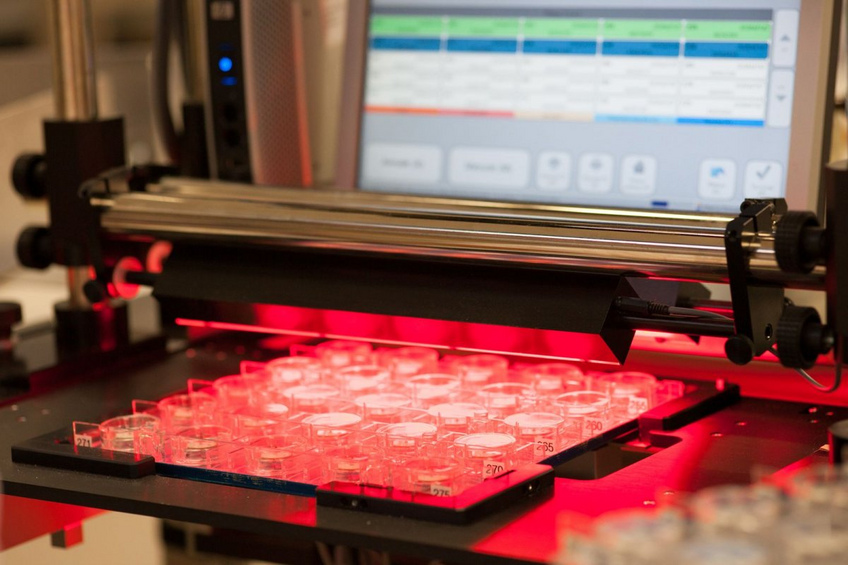

Swiss precision: the COSC is not a brand, and yet ... (Part 2)
The fact that a timepiece is “Swiss chronometer certified” is an added value for final customers. Hence, some brands systematically mention it in their communication campaigns.
The COSC label was registered in 2003 in class Nice 42. Why not register it in class 14, which is reserved for watch production? Surely it would have been better protected that way? The rationale behind this is that the organization that ensures watchmaking precision shuns being seen as a label or even a designation of origin (AOC) so as not to be seen as a competitor by its clients. As pointed out by Andreas Wyss, COSC director: “We can in no way consider registering as an AOC as we do not meet the criteria for this type of designation. Concerning becoming a label, we believe offering certification is far more interesting than that”. In any case, aficionados and customers consider the “Swiss Chronometer Certified” accreditation more than just a brand. Indeed, this three-word combination has institutional ramifications even in Swiss law.

Also, the burning interest shown in the COSC since it hit one-million registered pieces in 2001, shows it still deserves better promotion. The Confederation could just be the right actor for that, couldn’t it?
Not available to everyone
Contrary to former customs, watches can only be accredited by the COSC if both the case and the movement are Swiss Made. “The Board of Directors clearly reinstated it in 2010”, said the COSC’s director Andreas Wyss. Thus, movement suppliers must indicate whom the units that are being submitted will eventually be sent to. Furthermore, in order to avoid individuals presenting their own pieces, the submitting Swiss brand must be registered with a national institute of intellectual property.
For the record, the term “certified chronometer” is considered “illegal” abroad if the watch movement has not been tested as stipulated by the international ISO 3159 standard. In other words, COSC-like institutions cannot use the term. In fact, the requirements of the international standard mean that the de facto COSC keeps a certain monopoly on watch precision thanks to the premises where the BOs (Bureaux Officiels) are located. Unfortunately, the use of the word “chronometer” on its own cannot be protected.
Not-so-secret yet very informative figures
As the COSC is a non-profit organization, the publications of its general assembly reports and its annual reports are a rich source of information. For example, we can easily figure out the percentage of test fails. Even though the figures for 2013 have already been published and are hence available to everyone, the following figures have been taken from a 2010-2011 comparative study to avoid any risk of offending big and highly susceptible brands.

The number of submitted movements increased by 27.8% between 2010 and 2011. A total of 1,631,252 pieces of the 1,731,139 submitted in total received their chronometer certificate. This represents a failure rate of 5.8%. In 2011, 51 brands submitted their movements to one of the three COSC’s BOs. A total of 1,631,252 certificates were issued, that is, 30% more than in 2010 when 1,276,714 pieces were certified. A total 99,887 movements failed in 2011 compared to 55,154 in 2010. At this stage, it is necessary to specify that the 55,154 pieces from 2010 and the 99,887 pieces from 2011 have not all failed in terms of chronometry.
As Andreas Wyss explains: “These figures obviously include movements that did not meet the standard’s requirements, but there are also the pieces whose test we had to cancel because they had been badly handled in our BOs or the ones that stopped during the tests. That’s not even mentioning the tests that brands requested us to carry out all year round without asking for a certification”.

If we compare several years, we can even interpret more sensitive information. Indeed, it is indirectly possible to estimate the amount of pieces produced by some secretive brands if we read between the lines. And so we see that the number of pieces varies and some brands get dangerously close to others in terms of production whilst others stagnate, which is not good for their image. In order to avoid any useless criticism and despite the fact that these numbers are public, here are some considerations based on 2011’s numbers. Among the top-three submitting brands, Rolex was first with 751,285 pieces, followed by Omega with 509,301 and finally Breitling with154,456, including 28,301 quartz pieces. As we all know, Rolex submits almost all of its production and Breitling publicly states that its whole production goes through the COSC. Thus, it is possible to have a very precise idea of data that none of these brands would accept to release.
Get hold of previous statistics such as the ones between 2011 and 2013 and you will be able to analyzethe evolution in their production. Still within the highly interesting pages of 2010’s report, we find that unexpected names such as Enicar (17,115 pieces) or Mido (49,343) surpassed Panerai, Chopard and Titoni (20,536). We also find forgotten brands such as Bremont (1,548 pieces), Normana (1,155) and Olma (1,047).
--
Read our first article on the COSC:
Swiss precision: the COSC, official and Swiss (Part 1)



